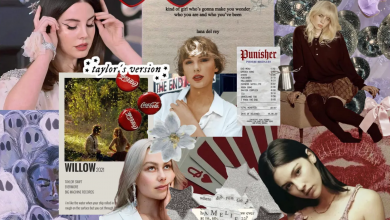Perfume and Jewelry: How Advertiser’s Shape The Role Of Women In Society
The phrase “sex sells” is exactly the idea that advertisers have been able to manipulate into a phenomenon which degrades females and transforms them from complex human beings into stagnant appealing figure pieces. Ironically enough, this portrayal of women is often intended to sell a product which is meant for women in the first place, such as perfume or jewelry. In advertising, these stereotypical images of women as either promiscuous sex objects or virginal maternal figures are degrading and dangerous for women because they reinforce limited expectations of behaviour and appearance.
In advertisements that sell jewelry, particularly engagement rings, women are not sexualized, yet their depiction reinforces a romanticized, but still demeaning, gender role. Women are shown fully clothed and smiling, but are also shown as dependent on their male counterpart, leaning against him, looking at him lovingly- all seemingly natural aspects of a healthy romantic relationship. However, while these actions aren’t questionable at face value, a deeper examination of these jewelry advertisements sheds light on the idea that reinforces the romantic notion of being incomplete without one’s significant other. These advertisers consistently sell their products with women depicted as a wife or as a mother, and either in a romantic setting with their male significant other or family. God forbid a woman buy a ring or necklace for her best friend, grandmother or even for herself. It further reinforces the idea that women are meant to be wooed by men and become future wives and mother as their end and only purpose in life.
By contrast, in advertisements which sell clothing or perfume –products meant to attract men– women are hypersexualized. They are often depicted in “welcoming” positions, have a serious “sexy” face and stare directly at the viewer, undeniably inviting him or her “in” and subconsciously associating the product with sexual power. However, these women aren’t respected by men, if any, in the advertisements. Men are usually in a sexual positions alongside the female and/or in a power stance in which the female remains a submissive figure piece next to the male. The social impact on a woman seeing these ads then, doesn’t reinforce her position as a wife or mother, but rather as a sexualized and physically attractive female. These advertisements create an unattainable ideal of beauty by objectifying the female body through edits via Photoshop, sometimes even dismembering the figures in their photos in order to do so.
Ultimately, these images of women in ads only serve to create a female identity crisis because they are polar opposites: a woman is expected to be both an alluring sexual demon -who in reality would be condemned from the social atmosphere and deemed unfit for a “real” relationship- and a pure virgin angel -with the perfect qualities suited to be a wife and eventually a mother, in that order. Moreover, these images create negative and limiting self perceptions which can result in a decrease in self-esteem and major physical and psychological issues such as depression, anxiety, sexual dysfunction and eating disorders. Products like jewelry and perfume are meant to make women happy, and yet the way in which they are being marketed and sold is doing the exact opposite by re-entrenching women into negative and limited roles.





